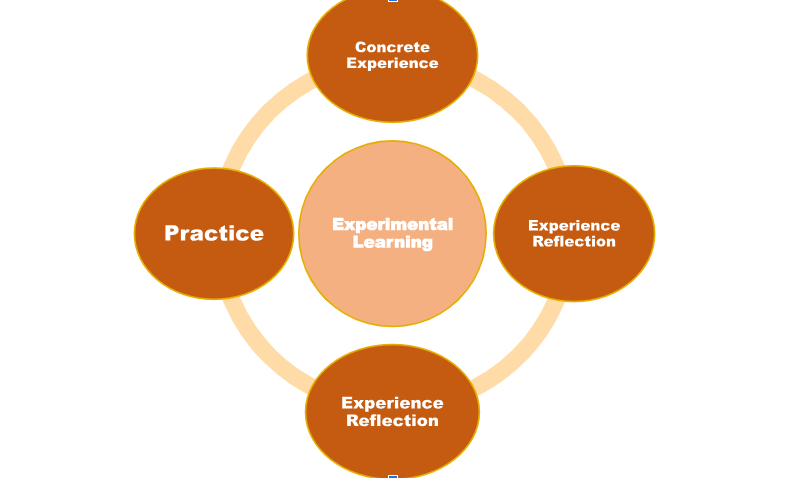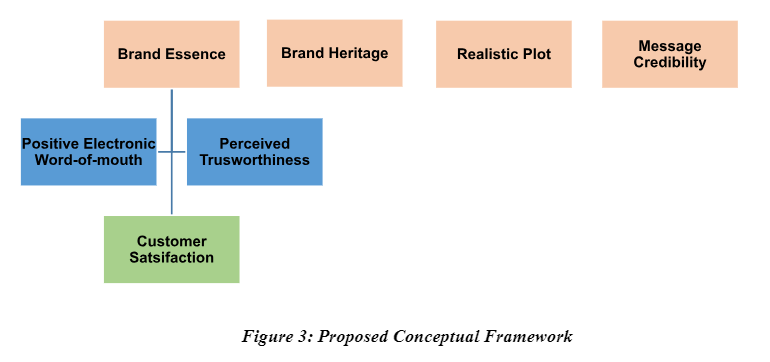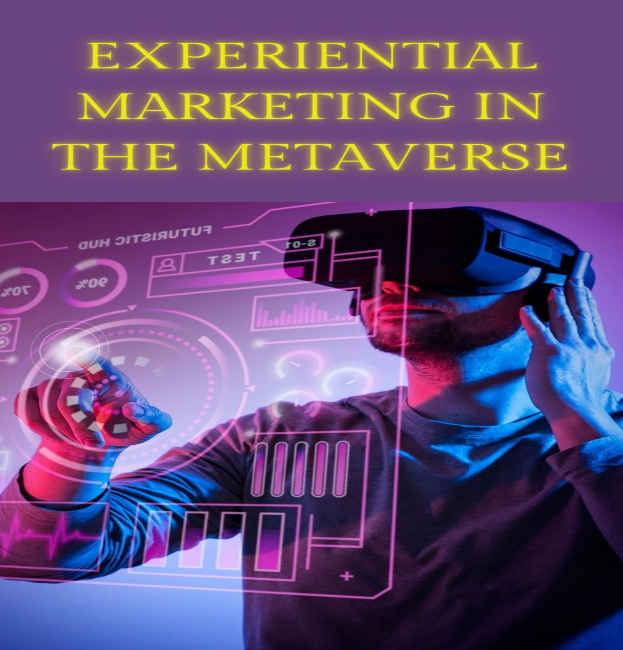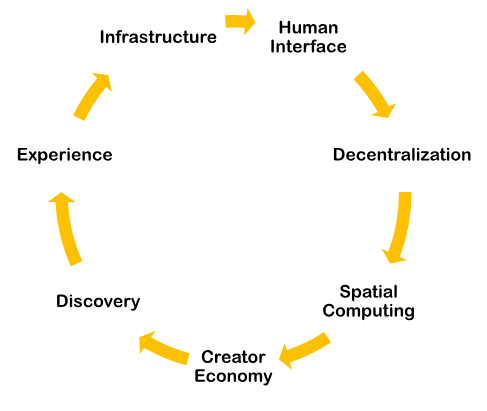Metaverse Description:
The metaverse is a source of network sharing, immersive virtual universe where humans can connect with friends, play games, shop and work. Many changes happen in marketing all the time, so companies are always looking for new ways to connect with customers. More people are interested in VR and the idea of the metaverse, which has led to a rise in immersive marketing. This is going to analyze how virtual reality could help businesses make more immersive brand activations and create stronger ties with their consumers.
Figure 1: Seven Layers of the Metaverse
Experiential Learning
Unlike more traditional forms of advertising, experiential marketing focuses on giving people times they will never forget. To make an impression on customers that lasts, experimental marketing uses things that are physical, emotional, and truly amazing and because of this, many businesses’ ways of engaging customers have changed. When compared to other types of marketing, interactive marketing tries to give people an event they will remember and enjoy.
This type of advertising depends on making real relationships with the people it wants to reach. The goal of experience marketing is to make a good impact on people that lasts. Brands use events, pop-up shops, and engaging shows, among other things, to get people interested and make an impact that lasts. Brands may be able to get more customers and make more money if they make an effect on present customers that lasts.Companies can get to know their ideal customers better through events, which are a type of experience marketing. Two things that businesses can do to make sure that customers remember their goods are immersive brand activations and product launches.
Brands may purposely make engaging settings and interactive experiences in order to get their customers more excited, involved, and interested. A lot of businesses use pop-up shops to try out new products, see how customers react, and find out more about their regular customers. Some businesses also use pop-up stores to show off their newest products. Companies are very good at making places where people want to stay, and interactive displays are a fun and creative way to do that. Virtual reality (VR) and interactive art shows sometimes have pieces that people can interact with and change in order to get a reaction.
The metaverse experience has opened up new ways for brands to use experiential marketing to reach more people and interact with them virtually. Moreover, the metaverse was made when the internet and VR/AR technology came together. This can help the companies and customers get along better and they must not be afraid to try new things and set themselves apart if they want to do well in today’s tough marketing world. This is being done because of how quickly the metaverse is expected to grow in the next year.
Immersive Experiences in VR
Since VR came out, everything has changed when it comes to interactive marketing in the metaverse. With virtual reality headsets, marketers may be able to push the limits of standard advertising by putting customers in a virtual world. VR technology gives brands, their goods and services, and the people they want to reach new ways to connect by taking users to different virtual worlds. It is possible that giving their customers a more involved experience with this technology would make them really happy.
Experience marketers may gain a lot from virtual reality’s ability to make experiences that are interesting and memorable. Experiential Marketing (VR) is different from advertising in other media because it actively encourages viewers to interact with the material by asking questions and taking part. This medium has a high level of presence and immersion because they can talk to other people in real time while exploring virtual places and interacting with virtual things.
Virtual reality (VR) is used in product demos to show customers how businesses can hook them in. Individual can do more studying, watch a movie, or take a test online and the point of making a true VR world is to give people an experience that is as close to real life as possible. Due to the internet, they can do things like virtual try-ons, house tours, and car reviews. Companies need to tell customers why their items are good if they want to keep them as customers. In the past few years, virtual reality has come a long way in terms of its ability to tell compelling stories and create immerse metaverse experiences.
Escape rooms, virtual tours of historical places, and live adventure games describe these kinds of experiences. Advertisers who know how to quietly but strategically weave their brand message into stories have a better opportunity to reach their people they want to reach. Advertisers can use virtual reality (VR) to build and view material that feels more real. The names of firms that offer engaging VR experiences may become better known among the people they want to reach. This means that everyone in the group has a stake in its success, even those who don’t like meetings.

Creating Immersive Brand Activations
Traditional advertising methods failed to get the desired results on several occasions because of flaws in their design. One obvious method for companies to connect with clients in the metaverse is via virtual events. Moreover, a wide range of virtual events, including product debuts, concerts, and trade exhibits, are within the realm of possibility. With virtual reality (VR), companies can take customers to faraway, but very realistic, places. Due to technological advancements, companies and individuals are able to communicate in real time. Businesses can connect with customers all over the world and even get people in their own communities involved by having virtual events.
Normal ways of doing things can’t keep up with the range and ease of access of these gatherings. Marketers might use immersive brand activations to set metaverse activations apart and use game principles to connect with customers in a way that makes them think. Virtual reality events, interactive scavenger hunts, and branded minigames are some ways to do this.
Challenges, exclusive content, and incentives are some of the ways that advertisers can get people interested in their efforts. Participants are likely to become more dedicated and excited than ever. Virtual stores are becoming more popular in the metaverse experience because they are easy to use. When businesses open virtual shops, they can give their customers a more realistic shopping experience.
In contrast, this is much better than most e-commerce methods as they are using virtual reality platform to hold virtual events, show off new goods, and do a lot of distinct interactive activities.

Future Trend of Experiential Marketing in Metaverse
Now that the internet and VR and AR technologies are around, marketers can take advantage of chances that they couldn’t before. As the metaverse experience is growing so quickly and technology is getting better all the time, experiential marketing could reach an infinite number of possible customers. Virtual reality concerts and events are one of the many interesting ways that experiential marketing can be used in the metaverse.
Companies can now offer virtual concerts and events that are almost identical to real ones because of progress in making avatars and virtual environments that look and feel like the real world. Brands can talk to fans from all over the world, get to know the performer better, and see unique virtual concert halls. They can watch virtual concerts from anywhere in the world and it is a great chance for both businesses and artists to make more money.
Virtual reality and augmented reality have made it possible for businesses to give customers experiences that are really immersing. As the power to captivate and inspire people to do amazing things is an amazing quality in a brand. Some ways to do this are through branded mini-games, interactive story experiences, and virtual product launches.
For example, an online clothing store might have a virtual fitting room on their site. Customers would be able to virtually try on clothes and accessories and they can have a much better shopping experience when they can combine the ease of online shopping with the personalized care of brick-and-mortar stores. Businesses in the new metaverse experience may be able to give customers a more immersive experience by using augmented reality goggles and other wearable tech. Just picture themself walking down the street and seeing ads and billboards that are specifically made to appeal to their tastes and interests.
When someone wears augmented reality glasses, it is easy to add digital content and help on top of their real environment. They could use these technologies to make marketing campaigns that mix the real and virtual worlds so that people have fully immersive experiences.
Finally, companies can give their customers memorable experiences with virtual reality and other types of immersive technology. This can help the companies and customers get along better as well as brands must not be afraid to try new things and set themselves apart if they want to do well in today’s tough marketing world. This is being done because of how quickly the metaverse is expected to grow in the next year.
FAQs
Question 1. How traditional forms of advertising differ from experience marketing?
Ans. Putting on memorable and exciting events is one way experience marketers strive to connect with people on an emotional level, engage their senses, and make an impression. The difference between experiential marketing and traditional marketing is that the latter encourages participation rather than passive consumption. The result is a deeper bond between consumers and their favorite brands.
Question 2. With the advent of virtual reality, what lies ahead for experiential marketing in the metaverse?
Ans. Companies can use virtual reality to place their customers in entirely fabricated environments and here, consumers can engage with the brand’s wares, messaging, and offerings in fresh and exciting ways. People can experience interactive tales and virtual product demos, among other things, when they put on virtual reality goggles. It would be great if they could participate and demonstrate how much they love these activities.
Question 3. When it came to advertisements in the metaverse, which ones stood out the most?
Ans. In the metaverse, businesses can engage with consumers by creating fictitious shops, games, and events. Once in a lifetime concerts are available, and people can discover new products through online marketplaces and immersion games.
Question 4. Why marketer’s ability to engage with users in the metaverse is crucial?
Ans. Offering unique challenges, virtual goods, and rewards is a great way for brands to increase their interaction with metaverse users. By offering tangible advantages to participants, they can increase their engagement, loyalty, and interest in their campaigns.
Question 5. How does the metaverse impact companies that offer experiences for sale?
Ans. The expansion of the metaverse and other technical developments have made the potential audience for experience marketing practically limitless. Marketers can create immersive experiences from the ground up to attract customers and retain them as customers. Such gatherings might take the form of virtual reality concerts or interactive brand experiences.


